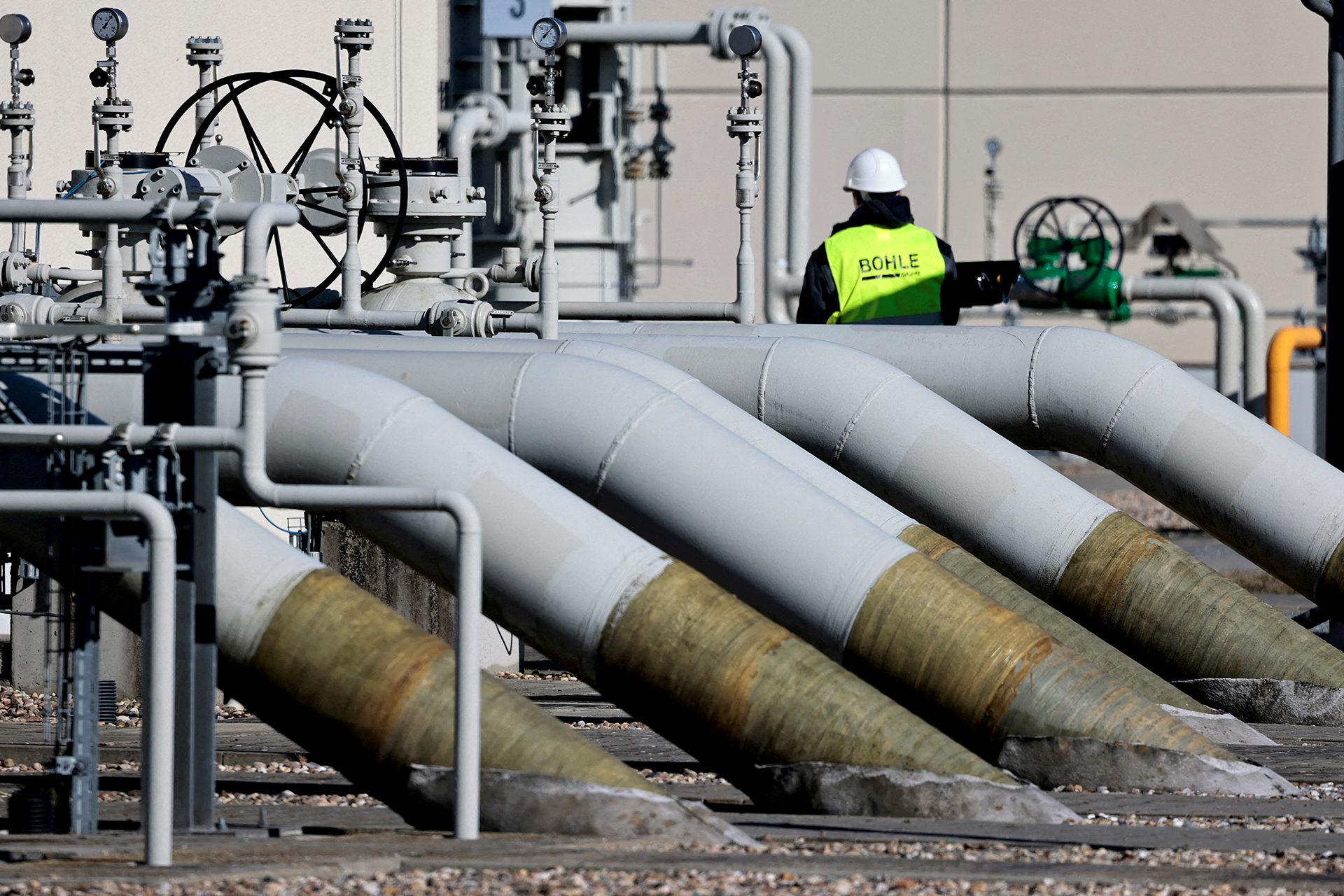Russia has refused to resume pumping natural gas through its largest pipeline to Europe, due to a maintenance problem, while Western governments accuse Moscow of looking for an excuse to cut supplies in response to sanctions imposed after its war on Ukraine.
The Nord Stream 1 pipeline - which carries Russian natural gas to Germany - was closed on August 31, due to what the Russian gas producer (Gazprom) said was maintenance work that will take three days and end on Saturday.
Gazprom announced on Friday that it would not be able to resume flows, citing an oil leak in the main gas turbine at the Portovaya pumping station near St Petersburg.
Here are details of Russian gas pipelines to Europe:
Nord Stream 1
The largest Russian gas pipeline to Europe in terms of the amount of 55 billion cubic meters annually.
This double line runs across the Baltic Sea to Germany.
In the past two years, it has already exceeded its capacity indicated on its dashboard, reaching 59.2 billion cubic meters in 2021.
Nord Stream 2
It is a second double pipeline of the same size, built in 2021, but Germany refused to approve its operation after Moscow declared war on Ukraine.
Yamal-Europe
This line has a capacity of 33 billion cubic meters, and it can also operate in the opposite direction, extending from Russia through Belarus and Poland to Germany.
Most of the time, he worked in the opposite direction, that is, in the east direction, since December 2021, sending gas from Germany to Poland.
Ukraine
Pipelines with a capacity of up to 32 billion cubic meters per year from the Friendship Gas Pipeline Network that runs from Russia through Ukraine to shipping to Europe via Slovakia.
leave stream
This 31.5 billion cubic meter dual line pipeline crosses the Black Sea into Turkey to supply the Turkish market and southern Europe.
blue stream
This line also crosses the Black Sea to Turkey and has a capacity of 16 billion cubic meters.
tumbling flows
Russia used to send most of its gas exports to Europe via Ukraine, but these quantities fell sharply, and Moscow replaced this by increasing its exports to Germany and Turkey.
Ukraine has refused to buy gas directly from Gazprom since 2015 after Moscow annexed Crimea and a pro-Russian rebellion erupted in eastern Ukraine.
Russia sought to marginalize Kyiv, as it not only boosted flows through alternative supply routes but also reduced the volumes of gas transported through Ukraine, which means Kyiv gets less revenue from transportation fees.
Russia's contract with Ukraine reduced the volumes transported through it from 65 billion cubic meters in 2020 to 40 billion cubic meters annually from 2021 to 2024.
Data from the Ukrainian gas transportation system operator shows that volumes transported across the country, which averaged 124.6 million cubic meters per day in 2021, are currently at about a third of that level.

